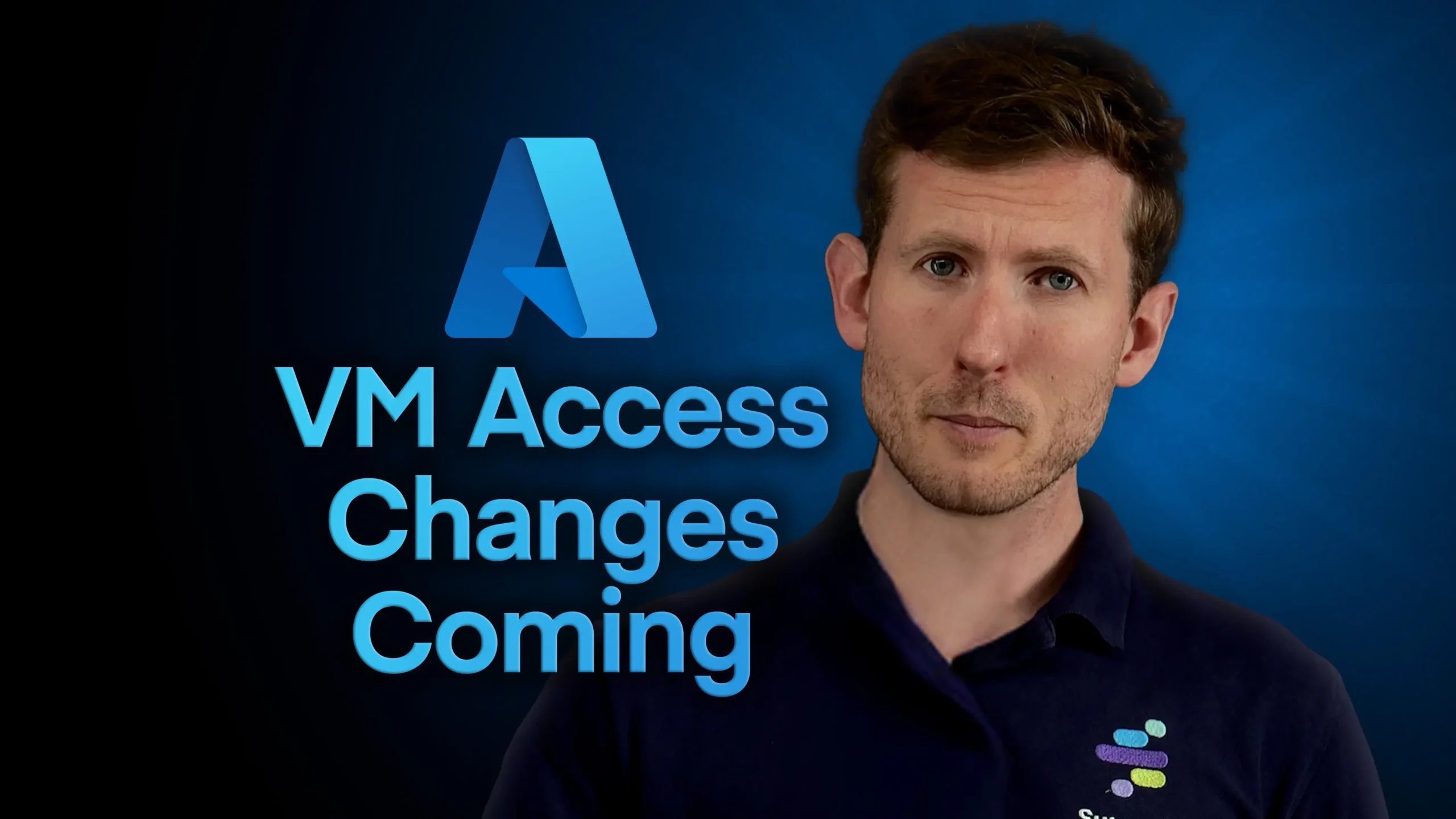How Azure Local supports workloads
Where Azure Local really shines is in the breadth of Azure native workloads it can run on-premises. Here’s what you can deploy:
Traditional and modern compute
Virtual machines remain a cornerstone of IT infrastructure, and Azure Local fully supports them. But it goes further, bringing Azure Kubernetes Service (AKS) on-premises for container orchestration, along with support for other containerised applications. This means you can run both traditional and cloud-native workloads side by side.
Azure Virtual Desktop on-premises with Azure Local
One of the most exciting capabilities is the ability to run Azure Virtual Desktop (AVD) locally. This brings the cost advantages of Windows 10/11 multi-session (previously an Azure-only feature) to your on-prem environment.
You can give users a familiar Windows experience while maintaining control and meeting specific business requirements that might have previously prevented cloud adoption.
Application services
Azure Local doesn’t stop at compute resources. It brings popular serverless capabilities on-prem, including:
Data and AI services in Azure Local
For data management, Azure Local supports Arc-enabled SQL Server and SQL managed instance. AI services are currently in preview, promising to bring advanced analytics capabilities closer to your data, which could be really valuable for scenarios where data can’t leave your premises but needs some serious crunching.
What makes this workload support particularly powerful is how easily it integrates with Azure’s management plane. Whether your apps are running in Azure proper or on Azure Local hardware, they can be managed through the same interface and tools, making for a nicely unified hybrid environment.
Virtual Machine management in Azure Local
Despite the industry’s shift towards containerisation, virtual machines remain a super important part of most IT infrastructures. Azure Local deals with this reality by bringing Azure-grade VM management capabilities to your on-prem environment.
The key to this management lies in how Azure Local treats your on-premises VMs. Every Arc-enabled VM in Azure Local is essentially an ARM resource — exactly the same as VMs running in Azure proper. This architectural choice opens up a world of possibilities for management and security.
From a management perspective, you get access to the full Azure toolkit. This includes Azure RBAC for privileged access management, templates for consistent deployment, and access to marketplace and gallery images. VM extensions give you powerful capabilities like Active Directory Join and custom scripts, while integration with Azure services brings enterprise-grade monitoring, policy management, and security features.
For teams already using infrastructure as code, there’s good news — you can deploy using familiar tools like ARM templates, Bicep, or Terraform. But perhaps the most significant advantage is the unified management experience. You can now handle all your VMs, whether cloud or on-premises, through a single pane of glass in the Azure portal.
Security hasn’t been overlooked either. Beyond the integration with Microsoft Defender for Cloud, Azure Local comes with strong security defaults built in. You get access to drift control tools and security fundamentals like trusted launch and TPM capabilities.
As well as these, there are features that you wouldn’t necessarily see in something like Hyper-V such as network security groups, which allow you to micro-segment and secure east-west traffic between your local VMs. This brings it more in line with the sort of features that you might see in VMware, and, more specifically, NSX.
Preview features and future developments for Azure Local
Azure Local isn’t standing still — there’s a bunch of exciting features currently in preview that promise to make the platform even more accessible and powerful.
Lower hardware requirements
One of the bigger changes is the dramatic reduction in entry-level hardware requirements. These open Azure Local to new use cases, like in retail or manufacturing settings where previous requirements might have stretched budgets too far. Some recent changes include:
- Minimum server requirement reduced from two to one
- Disk requirement dropped from four to just one
- Network requirements lowered from 10 Gbps to 1 Gbps
- Removal of Active Directory requirement
Disconnected operations
For orgs operating in air-gapped or highly regulated environments, the new disconnected operations feature is a game-changer. It lets you run a subset of Azure Local services without any cloud connectivity, using an appliance VM to run the control plane.
This means you can enjoy Azure’s capabilities while keeping all control and data strictly on-premises — great for environments where cloud connectivity isn’t an option.
VMware migration
The platform is also getting new migration capabilities. Soon, you’ll be able to use Azure Migrate to move workloads directly from VMware to Azure Local, similar to the existing VMware-to-Azure cloud migration process. This will make it easier for you to modernise infrastructure while keeping workloads on-prem when needed.
Use cases and applications
Many use cases for Azure Local are fairly niche, and it particularly shines in specific scenarios where traditional cloud solutions might fall short.
Here are some examples of where it can really come into its own.
Manufacturing environments
In modern manufacturing, every millisecond counts, from small workshops to giant factories. Production lines rely on mission-critical workloads that demand near real-time communications and continuous, low-latency operations. Azure Local is ideal for factories where any interruption to production would directly impact revenue. Bringing cloud capabilities to the factory floor, you’d gain smart manufacturing solutions without the latency or connectivity risks of public cloud.
Remote operations
Think of environments like oil rigs, ships at sea, or mining operations in remote locations. These settings often struggle with reliable internet connectivity, making traditional cloud solutions impractical. Azure Local lets these operations run complex cloud workloads locally while keeping the ability to sync with Azure when connectivity is available. Modern IT capabilities can be brought to even the most isolated locations.
Highly regulated industries
For organisations in heavily regulated sectors (e.g. financial services, healthcare, or government) data sovereignty and security requirements can make public cloud adoption a hassle. Azure Local offers a perfect middle ground, allowing these organisations to use modern cloud solutions while keeping complete control over their data and infrastructure. It’s particularly valuable when compliance requirements demand that certain data or processes remain on-premises.
Is Azure Local right for you?
Take a moment to think about your current IT infrastructure challenges.
Are you looking for a balance between on-premises control and cloud flexibility? Maybe you’ve been holding back from cloud adoption because of data sovereignty needs, or maybe your business-critical apps are struggling to perform. Azure Local could be just the thing you’ve been looking for.
You can end up with:
- Your business-critical apps running with the reliability of on-prem infrastructure but managed with the ease of cloud tools
- Complete control over your sensitive data while still using advanced Azure services
- The ability to modernise your IT infrastructure without the complexity of full cloud migration
- A future-proof platform that can grow and adapt as your business needs change
The platform’s flexibility in hardware choice means you can start with exactly what you need – no massive upfront investment required. And with the new reduced hardware requirements, Azure Local is more accessible than ever for businesses of all sizes.
Ready to explore how Azure Local could transform your IT infrastructure? Our cloud experts at Synextra can help you figure out if it’s the right fit for your organisation. We’ll work with you to understand your needs, help plan your implementation, and make sure you get the most value from your investment.
Get in touch with our team today to discuss your hybrid cloud strategy and see if Azure Local could be the game-changer your business needs.





